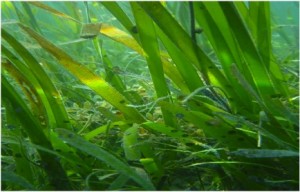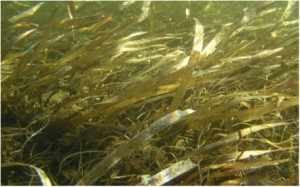By Miguel Fortes
It is only very recently that the importance of protecting and restoring seagrass habitats has been clarified as a climate change mitigation strategy. Towards this end, Conservation International, IUCN, IOC‐UNESCO and partners are “building a program to coordinate and guide establishment of coastal ‘blue’ carbon as a conservation and management tool contributing to climate change mitigation and the development of associated conservation financing mechanisms”. The initial action in order to realize the program was the formation in February 2011 of the “Blue Carbon” International Scientific Working Group.
The group is tasked to:
- Develop coastal marine conservation and management approaches that maximize sequestration of carbon and avoided emissions in coastal systems.
- Design and implement the program of work for carbon accounting in coastal systems and in turn developing economic incentives
- Coordinate with and synthesize other related existing science and policy activities
- Identify relevant pilot field projects, and provide guidance, technical advice, and support to the pilot projects.
- Identify essential science gaps for research programs
Five of the 22 members of the working group are well known to us in the WSA and seagrass circle: Carlos M. Duarte, Miguel D. Fortes, Jim Fourqurean, Nuria Marba, and Peter Ralph. The working group is convened by Conservation International, International Union for Conservation of Nature, and the UNESCO Intergovernmental Oceanographic Commission. The Waterloo Foundation, NASA and UNEP have provided funding for the group.
The initial recommendations of the group are coming out soon in a pamphlet: “Minimizing Carbon Emissions and Maximizing Carbon Sequestration and Storage by Seagrasses, Tidal Marshes, Mangroves”. They embody the immediate steps that need to be taken by coastal communities, managers, policy makers and the scientific community. In brief, these steps are:
- Enhanced national and international research efforts—building on existing scientific data, analysis, and available technologies, a coherent and programmatic global data gathering and assessment effort is needed.
- Enhanced local and regional management measures—current knowledge of the carbon sequestration potential of coastal wetlands and emissions from drained systems is sufficient to warrant enhanced management actions now.
- Enhanced international recognition of coastal carbon ecosystems—current international actions to reduce the impacts of climate change do not recognize the greenhouse gas emissions resulting from the degradation of coastal wetlands or the role of healthy coastal ecosystems in sequestering carbon dioxide.

A healthy mixed species seagrass meadow in Ilog Malino, Bolinao, Philippines. Photo courtesy of M. Fortes
At the moment, the group is developing the Global Coastal Carbon Data Archive.
For more information:
Recommendations from the 1st meeting of the Blue Carbon Scientific Working group
Blue Carbon blog
